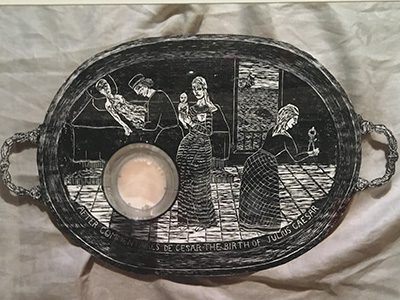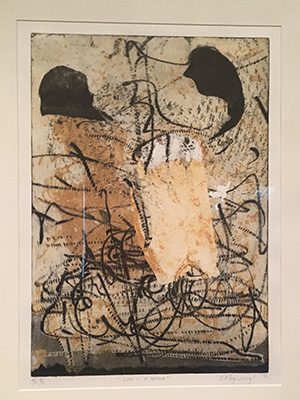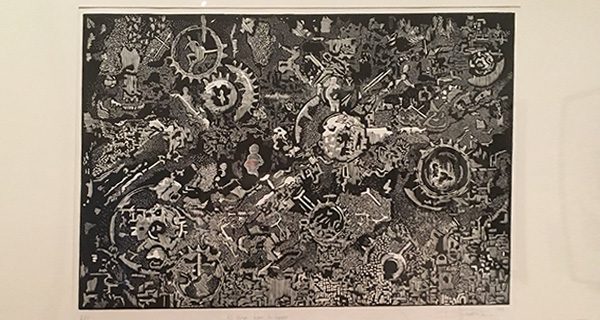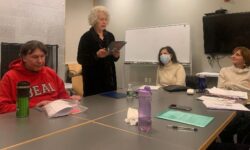[ccfic caption-text format="plaintext"]
By Amelia Tarallo
Hometown Weekly Special Correspondent
Apartheid in South Africa led to racial segregation amongst artists and their use of specific techniques. White artists studied print making at official art schools, while black artists mastered linocuts at training centers.
Today, pieces created using these techniques convey the importance of communication, language, and community.
 The Davis Museum's current exhibit, “Life on Paper: Contemporary Prints From South Africa,” does just that. Using gifts given to the museum by the Artist Proof Studio in Johannesburg and Dr. Pamela Allara (Brandeis University), assistant curator Amanda Gilvin has arranged the spectacular art exhibit.
The Davis Museum's current exhibit, “Life on Paper: Contemporary Prints From South Africa,” does just that. Using gifts given to the museum by the Artist Proof Studio in Johannesburg and Dr. Pamela Allara (Brandeis University), assistant curator Amanda Gilvin has arranged the spectacular art exhibit.
The exhibit contains drypoints, lithographs, woodcuts, and screen prints created by numerous South African artists.
Kim Berman's monoprint, “Telling the Story: Students at Work 1” depicts six students creating their own prints in an art studio. Berman, along with Nhlanhla Xabu, is one of the co-founders of the Artist Proof Studio. Created with Berman's belief that printmaking can be used as a "democratic medium," the Artist Proof Studio has resulted in hundreds of pieces showcasing South Africa's political identities.
 The most colorful piece included in the exhibit is Susan Woolf's “Taxi Hand Signs.” The lithograph depicts 20 different meticulously drawn hand signals. Each signal is a different color. Woolf, an anthropologist, spent years researching these hand signals, which are used by commuters to communicate with cab drivers in South Africa. Today, Woolf's study is used by tourists and residents to learn this unofficial language of South Africa.
The most colorful piece included in the exhibit is Susan Woolf's “Taxi Hand Signs.” The lithograph depicts 20 different meticulously drawn hand signals. Each signal is a different color. Woolf, an anthropologist, spent years researching these hand signals, which are used by commuters to communicate with cab drivers in South Africa. Today, Woolf's study is used by tourists and residents to learn this unofficial language of South Africa.
“Key of Life,” an etching created by Mario Soares, depicts two young students wearing backpacks walking on a street. The etching is meant to showcase the importance of education. Soares himself trained at the Artist Proof Studio for three years before becoming a full-time artist.
The exhibit will be on display at Wellesley College’s Davis Museum until December 17.






















